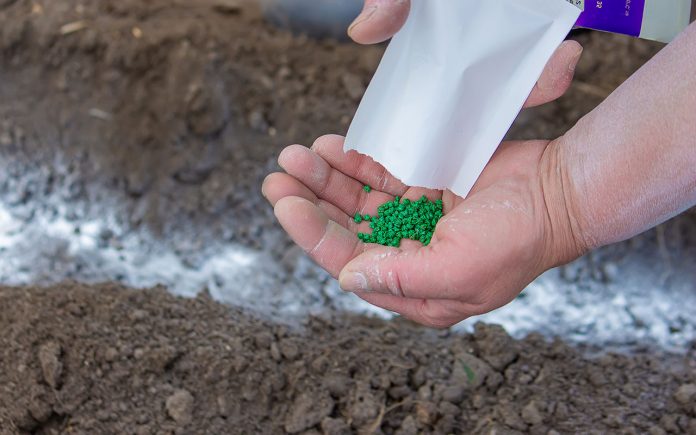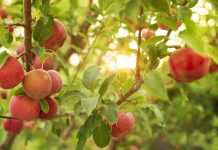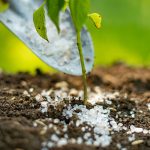If you are wondering if ashes are used as fertilizer for plants, the answer is yes. There are many methods to provide nutrients to plants, including naturally occurring and chemical nutrients. Although the latter have boosted agriculture in recent years, they can have negative effects such as soil degradation or contamination of natural resources.
If you are looking for some natural fertilizer for your garden, we invite you to read this article from EcologíaVerde where you will learn if ashes are used as fertilizer for plants and what ashes are used for in the garden.
You may also be interested in: How to make homemade organic fertilizer for plants
Is ash good for plants?
Ash is good for plants. This is because it is obtained by burning organic matter, which when burned leaves bioavailable many elements that can be used by plants. Therefore, the ash serves as vegetable fertilizer.
In addition to having multiple benefits, it helps to make the most of waste and reintegrate it back into the biogeochemical cycle. Here’s what properties ash has and why you should consider incorporating it into your plants.
Properties and benefits of ashes as fertilizer for plants
The ashes serve as a nutrient supply for plants, that is, they serve as fertilizer. This is because they contain large amounts of minerals necessary for plants such as calcium, trace elements, but especially they have large amounts of potassium that reach 3%.
The uses of ashes for plants are several, and here are some of the benefits it has:
- Potassium helps the plant to resist frost, ideal to incorporate in temperate areas where there is snowfall.
- Inhibits fungal development and makes it easier for plants to resist fungal pests
- Prevents the putrefaction of plant tissues.
- It has a high content of potash that animal fertilizers do not have.
- They serve as an edaphic stabilizer, that is, they improve the structure and composition of the soil or substrate.
- Keep pests such as insects, slugs and snails away.
- Stabilizes soils that are too acidic. This results in plants not being able to absorb or synthesize certain nutrients, deteriorating them and leading to death.
- It is used as a substitute for whitewashing, being a cheaper alternative and easier to make by oneself.
- It is suitable for most plants, whether vegetables, fruit trees and ornamentals. Fruit trees should be used sparingly because they require slightly acidic soil.
- It accelerates the production of flowers and fruits, achieving higher production and better quality.
- They strengthen the root system of plants, allowing better absorption of nutrients and water.
How to Use Ashes as Fertilizer for Plants
To begin the process, it is necessary to clarify that the ashes that are used for plant fertilizer by expert gardeners are those that come from grass left over from pruning between the months of April and June, the rainy season in which pruning must be done more frequently. On the other hand, wood ash that is produced from branches, lignified stems such as those of roses, or wood left over from fireplaces and campfires, is also customary. However, the amount of potassium varies according to the age of the material to be incinerated. Young branches have more potassium than old trunks.
- Once the ash is already available, it must be checked that there are not very complete pieces of plant matter. The ideal texture is powder, and for this it should ideally be sifted so that the powder is light and uniform. It should always be handled with gloves, protective goggles, and long sleeves.
- The ash is spread in the lower part where the plant is going to be placed, either in a hole, pot or growing furrow. In this way it is used as fertilizer. When it is applied directly to the soil, it should be winterized, and it should be integrated into the soil by removing or burying it very well so that the components have an effect. Placing it in winter ensures that it will not be harmful when spring arrives. But if you want to use it as a pest repellent, you spread the ash around the plant in question in the form of mulch.
- In addition to the fact that it can be used alone, you can add a handful of fertilizer to the fertilizer we already have, which can be for example worm humus or dung. This will form an even more complete fertilizer.
- The ash dose for plants is quite low compared to what is needed with other types of fertilizers. Per square meter, 50 to 70 grams are used.
- It should only be used occasionally because it alkalizes the soil too much, provides a lot of mineral salts and can be counterproductive. Also, since pH basifies soil pH, it should be avoided in plants that do not tolerate slightly alkaline soils. If you have strips to measure pH, you can check that it does not exceed 7.5, a measure that is already harmful to plants.
- Ash should not be left in the rain because potassium deteriorates. Try to store the one you don’t use in sheltered sacks, and avoid using it in the rainy season.
Now that you know if ashes are used as fertilizer for plants, you may be interested in these articles about organic fertilizer: what it is, types, benefits and how to make it and How to make homemade organic fertilizer for plants.










